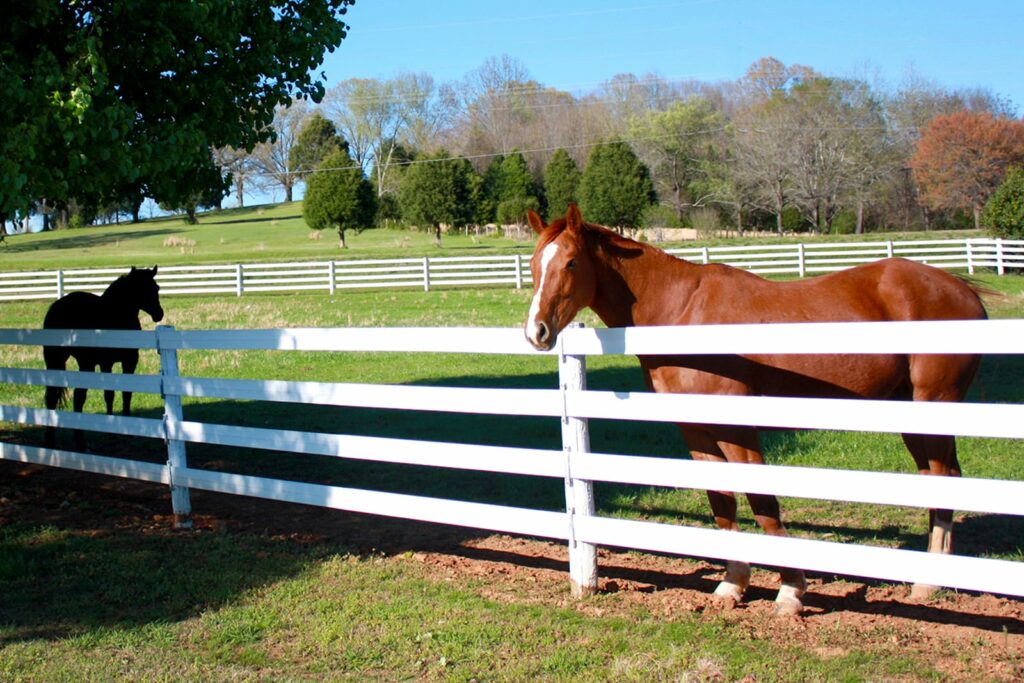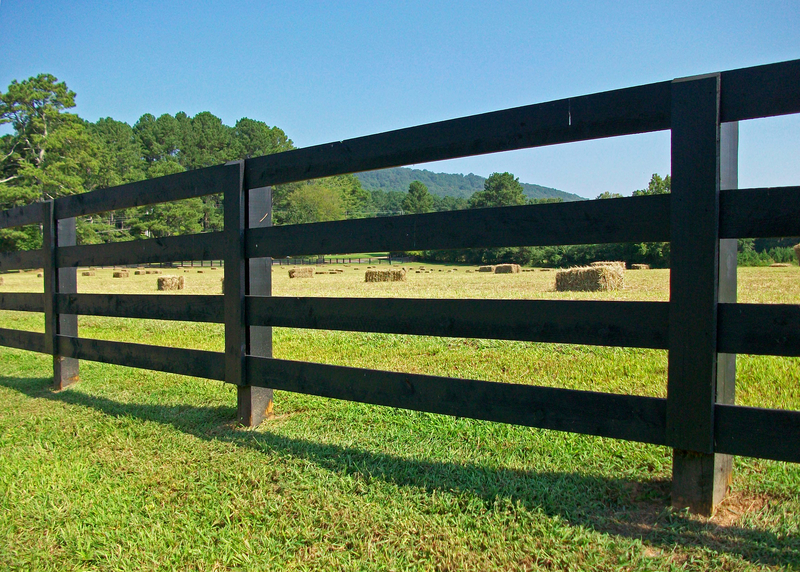Stock & Noble

- BY Tripti Kakkar
Australia and extreme weather conditions have lately become synonymous with each other. We recently conducted a survey, asking property owners across Australia if wet weather has impacted their fencing projects.
Guess what?
Over 85% of them said “Yes”. So, if you are a property owner, we can visualise you nodding your head right now and agreeing as well.
At Stock & Noble, we have years of experience in providing the finest fencing solutions to our clients across Australia and New Zealand. We’ve managed several fencing projects from start to finish and are aware of the major pitfalls that you might face in the process of executing your fencing project during wet weather conditions. We also know a few effective ways to reduce the impact of wet weather and be prepared for it.
The biggest problem with weather is the unpredictability as well as the fact that rural properties do not have as many facilities or services to manage such extreme weather conditions of prolonged rains or floods.
While we definitely have no control over the weather, we do have control over what we can do about it. We are here to help you have a better understanding of the impact weather can have on your fencing project and the best ways to help you deal with it.
At the end of your read, you will be more prepared to brace for the wet season, plan better, be less stressed about the unknown, have enhanced acceptance and hopefully be successful in creating your dream property.
What’s the impact of wet weather on my fencing project?
There’s some good news and some bad news. While rain can derail or delay the installation of your fencing, it’s likely to have no impact on the supply or delivery of your fencing, or the already installed fencing on your property.
In some cases, continuous rain can weaken your posts. Flooding might wash the fencing away, but it’s largely the installation of new fencing projects which bear the brunt of wet weather.
How wet weather affects the installation of horse fencing?
Most installers have several horse fencing projects pre-booked and scheduled one after another to keep a steady stream of income. If the current project gets pushed out due to unsuitable weather conditions, the scheduled projects ahead get delayed as well. This can create a snowball effect where new projects keep lining up, but the ongoing projects aren’t able to be started or wrapped up in time.
There are multiple reasons why the installation has to be delayed due to wet weather:
1. Machinery can get stuck
During installation on wet ground, there are high chances of heavy machinery like tractors getting stuck into the ground or being wrecked. Even if the installer has another project in a dry area, it cannot be started till the machinery is able to be brought offsite and ready to move to the new project.
This means they cannot do any other work and equals to loss of money and additional cost which most Fencing Contractors will try their best to avoid.
2. Your pasture can be damaged
In wet weather, heavy machinery like big excavators can ruin the pasture at the horse property. You don’t want damaged pastures that compromise the safety of your horses. It’s important to note that in some cases, fixing the severely damaged pasture might cost even more than your fencing installation.
3. Drilling holes for posts can be difficult
For the installation of post and rail fencing, be it Timber, PVC or Buckley Steel Fencing System holes have to be dug into the ground for posts. If it continues to rain, the holes might get filled with water making it difficult for the installer to work.
4. It can be an Occupational Health and Safety Hazard
If there is undulation on a horse property or if it is located on a steep hill, installing during rains or under unsuitable weather conditions can be extremely risky. There are chances of the tractor or other piece of machinery sliding down and resulting in injury to the installer.
6 best solutions to weather-related fencing problems
Every property is different, every installation is different, and every situation varies depending on where you are located and what are the weather conditions.
You can use either or all of these solutions to deal with the weather based on your specific scenario.
Solution #1
Plan out everything else really well.
The truth is you cannot control the weather. But you can plan the rest of the fencing project so well that you are ready to install when better times begin.
So choose, order and have your fencing material delivered in time and keep everything ready on site. Communicate frequently with your installer about your fencing requirements, delivery of fencing material and prevailing weather conditions. So that you are all set to start the installation when the weather permits. Making sure there’s no delay on your part.
If you’re in the beginning stages of your horse fencing project planning, your first step will be to map out your fencing plan.
Solution #2
Be flexible with your timeline
If possible, we would advise you to plan your fencing project with a broader mindset that even if it gets delayed you can always adjust to the new timeline. It will help you make peace with elements that are beyond your control, fret less over what cannot happen and enjoy your project when it finally begins.
Solution #3
Request your Fencing Contractor to get it done regardless of the damage to the paddocks
This is not a common choice, however, if it’s extremely critical for you to meet the timeline you can ask your contractor if they will go ahead with installing the fencing in wet weather.
It’s good to be aware of the probable consequences that might arise on the way, like machinery getting stuck or the pasture getting damaged. It will result in extra cost and effort needed on your part.
You also might face some resistance from the Fencing Contractor as it will be a slow and inefficient process to install horse fences. In our experience, most property owners prefer to wait for suitable weather.
Solution #4
Choose another project
When you are giving your property a makeover, there are usually several projects to be executed. If the weather isn’t favourable for the installation of your new horse fencing, feel free to push it down the priority list. Choose another project like redoing your stables, an arena cover or paddock shelters which can be done even in wet weather conditions.
Solution #5
Put up temporary fencing
In most cases, at a horse property, there will be old fencing that needs to be pulled down and replaced with new. However, if the installation of your new fence isn’t possible, let the old one stay till the weather becomes better.
Also, if the situation is that there’s no fencing at all, to begin with, and you cannot move your horses to an agistment property, then you can choose a product like Equirope. It is comparatively much safer for horses than other temporary fencing options.
Solution #6
Accept it and wait
For most problems in the world, there are either direct solutions or there are none that are practical. At some stage, there may come a point when it becomes important for you to confront the facts. If the year is going to be too wet to do fencing, it’s better to leave it and simply accept the truth. It will save you a lot of frustration and you can try to be content with waiting. While we do not like to be the bearer of bad news, there have been some clients who in hindsight would have preferred to wait for better conditions and then make a clean run during installation.
Take the first step towards reducing wet weather’s impact on your fencing project
It’s no secret that wet weather delays the installation of new fencing projects across Australia. A commonly faced issue at horse properties, you need strategic solutions for dealing with it effectively and efficiently.
The best option available to you to help manage the impact of wet weather is to plan well ahead of time and always keep your Fencing Contractor in the loop. Such that as soon as a window of opportunity appears, you are ready to install your fences. Make sure there’s no delay and you can create a beautiful equine property.
Based on our experience we want to share some key insights which can further help you to plan your fencing better and avoid 6-12 months’ delays. We have laid out a 6-step path for you to follow and reach your dream fencing.
If you need any more information on managing fencing projects during extreme weather conditions or have questions related to the installation of different horse fencing solutions, then book a free personalised consultation. One of our fencing experts will soon connect with you and clear all your doubts to help you achieve your vision.





Hi Tripti,
I appreciate your insights on managing the challenges of wet weather during fencing projects. As a professional fence installer in the USA, I can attest to the importance of proper site preparation and choosing durable materials to withstand moisture. Your recommendation on scheduling projects during drier seasons is spot on—it’s a strategy that saves both time and resources.
In your experience, are there specific tools or techniques you’ve found particularly useful for handling waterlogged soil during installations? I’d love to hear your perspective on this!
Thank you for sharing your expertise. In all reality I don’t think we get wet like you do in the US when the snow melts but often if a site becomes really wet the contractors will simply leave site and move to another project and come back when its dry enough to do the project.
I’d love to hear what’s been working for you! It’s always great to compare notes and share ideas.